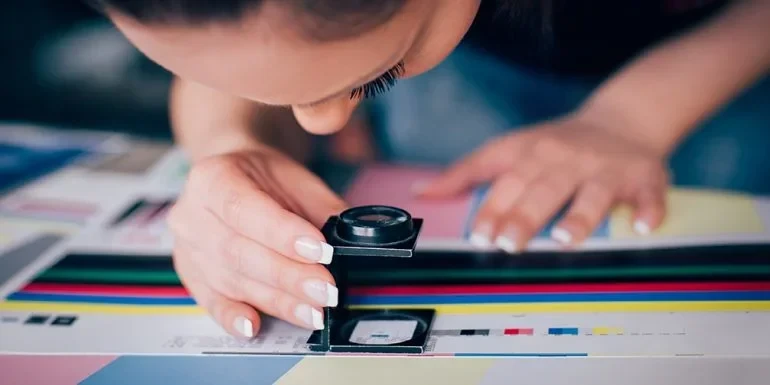Major players gain a competitive advantage in the market as digital printing redefines industry standards with its versatility, customisation options, and sustainability advantages.

Digital printing may be relatively new to packaging, but it is fast becoming a key player in the highly competitive packaging market, say experts.
Ohio, USA-based market research company Smithers says digital will be the fastest growing print technology for packaging from 2022 to 2027.
Indeed, a study published by USA consultants Towards Packaging, a sister firm of Precedence Research, said the digital printing packaging sector is valued at more than $24.15m in 2023 and is estimated to reach $56.03m by 2032. In 2022, North America was the largest market with a 31.15% share, followed by Europe at 29.47%, it said.
Major players include American majors QuadGraphics Inc, Hewlett Packard (HP), Eastman Kodak and the WS Packaging Group, plus Britain’s Mondi Plc, the research states.
Digital printing innovations
Without doubt, this innovative technology offers design and production flexibility, with fewer stages than ‘traditional’ printing’s application of ink to plates or screens that stamp the packaging. In digital packaging, a digital file, typically a PDF or JPEG, is transferred to a printer to apply designs or information and/or designs on to packaging materials.
The most common use of digital printing is inkjet with electrophotography and thermal transfer, with nanographic printing also gaining ground. Here, ultra-small particles of wet ink are jetted onto a conveyor blanket, drying there before being transferred onto packaging paper.
René Schavoir, managing director of Essen, Germany-based Digital Printing Association (DIPA) and Uwe Melichar, packaging expert and vice president at the European Brand and Packaging Design Association (EPDA), told Packaging Gateway that the main advantages of digital printing were individualisation as opposed to mass production.
The technique is particularly suited to short runs: “There is no overproduction, you only print as many designs as necessary,” said Mr Melichar.
Business sectors using digital printing most effectively are food and beverage packaging, fast-moving consumer goods such as cosmetics and pharmaceuticals and, particularly since the Covid-19 pandemic, e-commerce, when online selling and deliveries boomed, said Schavoir.
Digital printing’s innovation is suited to all types of materials. While first used in 1994 for labels, the technology is now visible on paper, shrink wrap sleeves, cardboard, metal (cans) and flexible packaging (pouches and wrappers), Melichar explained, adding that while not so common, digital printing can also be used on glass.
Cost has always been the main sticking point due to the price of the equipment and ink needed. And experts agree that analogue printing – flexo or lithography – is still more economical for larger print runs: “Digital printing is still slow compared to conventional printing,” Melichar said. “But digital catches up in terms of speed and cost,” especially with issues around plates and tooling.
Also, digital printing is becoming less expensive compared to the traditional offset, flexographic, rotary press and silkscreen techniques, he said: “And if you have small print runs, it is highly competitive.”
A ‘crossover’ point varies by company and print task, with 50,000 impressions stated by USA-based equipment and service supplier EFI’s vice president, worldwide marketing, Ken Hanulec in a November 2023 article from Washington-based packaging information site Packaging Dive.
The advantages of digital printing
Digital printing’s key advantage is its creativeness, many experts agree, with the ability to attract its audience with eye catching designs. The technology is even used for Amazon boxes to send Taylor Swift albums.
“Digital printing allows for the use of a diverse range of substrates, opening up possibilities for unique textures, colours and embellishments,” the Towards Packaging report states. “This flexibility in material selection contributes to the overall aesthetics of the product and reinforces brand identity.”
Indeed, while Mr Melichar told Packaging Gateway that “The transfer from technology to packaging is difficult” and that “good ideas are needed to bring digital printing to life,” companies are increasingly becoming aware of the personalisation and individualisation opportunities.
“There are fantastic projects from various brands on the market, from printing individual names all the way to unique, arty layouts,” he said, noting that the colour choices are wider too.
Italian multinational chocolate manufacturer Ferrero’s flagship brand Nutella did a great project with Hewlett Packard for example: “Out of four million Nutella glasses shrink wrapped and digitally printed in Italy, only a few had ‘twins’,” he said.
The company launched a competition where if two people found the same Nutella jar, “they won big money. This created a huge buzz with people using social media to promote their packaging and find the twin.”
Digital printing also means smart packaging, added Melichar. Tamper-proof solutions are possible with serial numbers and bar codes. In this way, digital printing can help fight counterfeit packaging, he made clear.
Perhaps the clearest benefit is in digital printing’s sustainability. “There are no tools and no plates,” said Schavoir and Melichar, meaning that the CO2 footprint is much better. Energy, time and resources are saved.
There is no material and paper waste due to customised production and on-demand printing. In addition, eco-friendly inks, soy or water-based colours and recycled materials can be used.
While digital printing is making waves in all materials and sectors, and the technology is becoming quicker and with an improved format, there is without doubt room for both methods: “Digital printing is complementary to conventional printing,” said Melichar.
“There are even hybrid solutions possible,” he said, with companies integrating digital and flexo technologies including suppliers such as Germany’s Heidelberg and Krones as well as Spain’s Kento Digital Printing, “meaning a high print run will be pre-produced and customised via digital printing,” said Melichar: “This is a great opportunity.”
Source from Packaging Gateway
Disclaimer: The information set forth above is provided by packaging-gateway.com independently of Chovm.com. Chovm.com makes no representation and warranties as to the quality and reliability of the seller and products.




